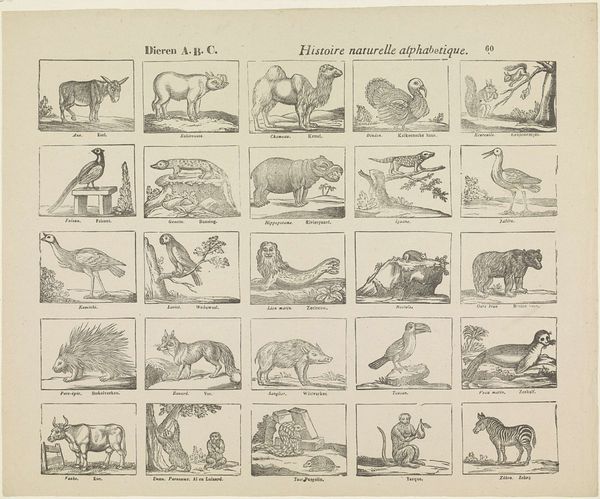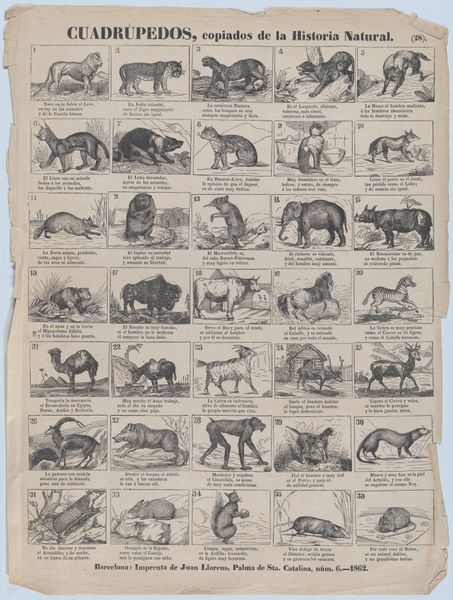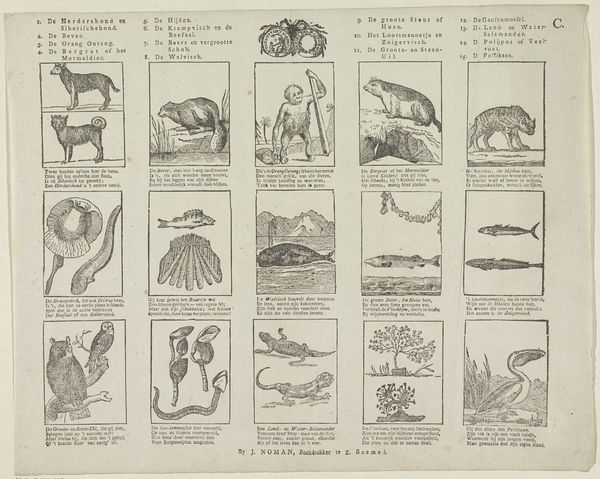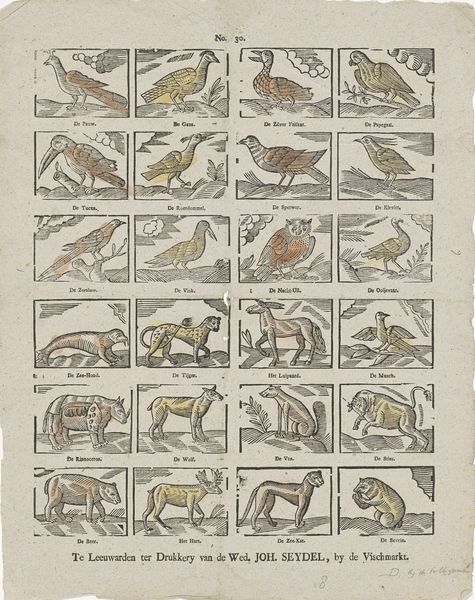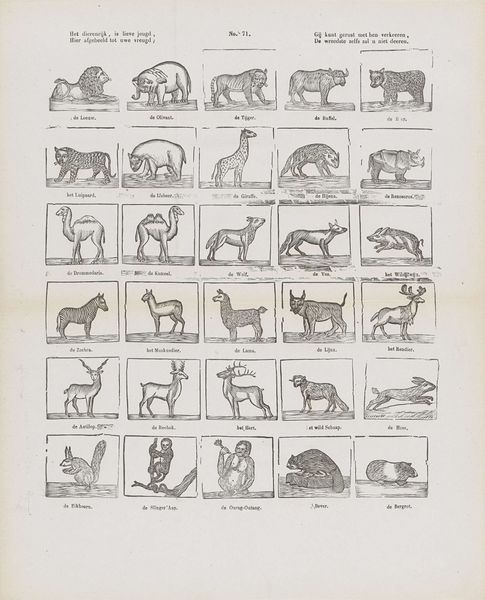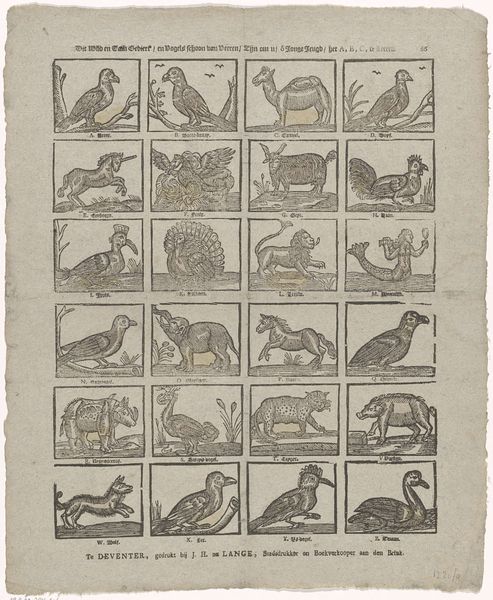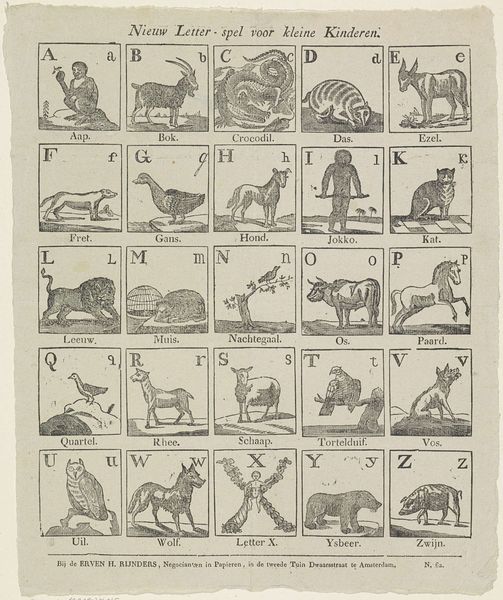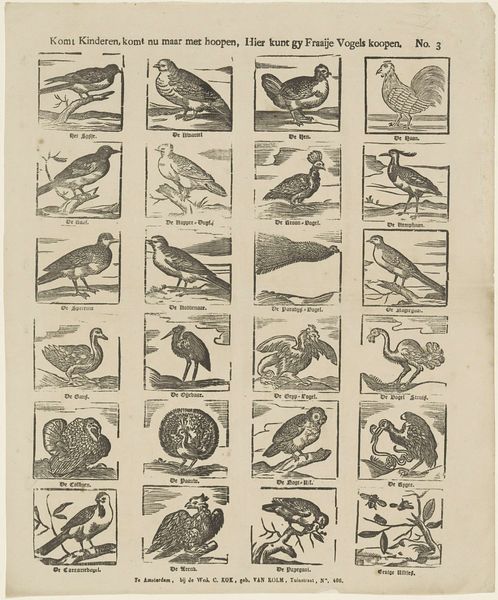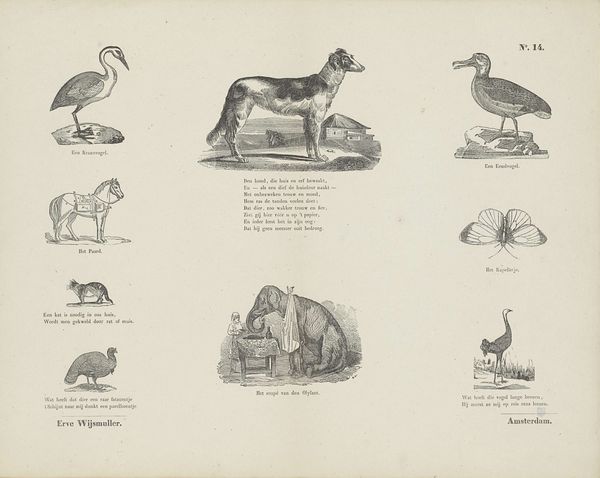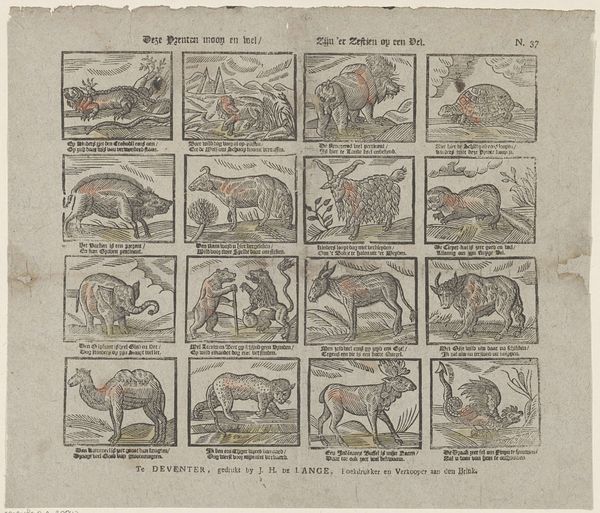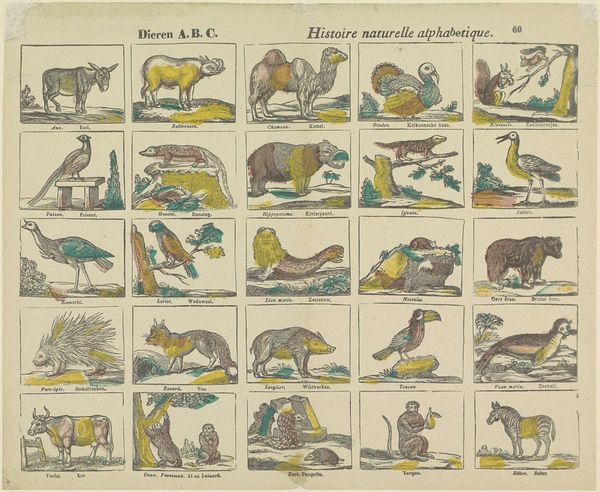
Kunt g'in deez' prent genoegen smaken, / Zoo zal m'er u nog meerder maken 1819 - 1840
0:00
0:00
alexandercranendoncq
Rijksmuseum
drawing, print, engraving
#
drawing
#
comic strip sketch
#
light pencil work
#
quirky sketch
# print
#
dog
#
sketch book
#
personal sketchbook
#
idea generation sketch
#
sketchwork
#
sketchbook drawing
#
genre-painting
#
storyboard and sketchbook work
#
sketchbook art
#
engraving
Dimensions: height 423 mm, width 333 mm
Copyright: Rijks Museum: Open Domain
Curator: This print, dating from between 1819 and 1840 and titled "Kunt g'in deez' prent genoegen smaken, / Zoo zal m'er u nog meerder maken", strikes me as fascinating. What a menagerie of creatures! Editor: Yes, it's teeming with them! What grabs me is the grid-like arrangement – almost like a bestiary meets a very early form of a comic strip. How do you approach this type of work, especially considering its materials – drawing and engraving? Curator: Well, its medium screams "production". Engraving and printmaking, in general, allowed for widespread distribution. These images weren't necessarily destined for wealthy collectors, were they? I wonder about its audience. Did these cheap prints democratize access to images for those lower down the social scale? Editor: That's an interesting idea. You're suggesting that the print's value resides not just in its imagery, but in its accessibility? Did the production of multiple copies influence how it was seen and used? Curator: Absolutely. We must also think about who Alexander Cranendoncq was and why he made this. Is it an independent artwork, a commercial piece or, a commission? Maybe these playful depictions served a more functional role within society. Do you agree with my assessment? Editor: I do. It challenges the idea of art for art’s sake. The choice of medium here really emphasizes function, rather than the preciousness associated with unique art objects. I now find this simple engraving far more complex and relevant! Curator: Indeed! Thinking about how art is made, distributed, and consumed opens a whole new world of questions. This work highlights the intersection of artistic creation, production methods and their broader societal impact.
Comments
No comments
Be the first to comment and join the conversation on the ultimate creative platform.
